
考情分析
兩(liang) 張試卷結構和考察內(nei) 容都類似,本次SHA考生遇到的試卷是set 2。簡答題題的難度中規中矩。第一題都是關(guan) 於(yu) 宏觀政策和自我調節的。這次與(yu) 2023年一樣考察了充分準備金製度的考點,與(yu) 2023不同的是這次還要求畫準備金市場的圖形。
這道題是新題,但是考前的押題已經包括這道題目了。第二題是GDP和通脹率的計算題,難度不高。第三題是匯率題。其中set 1考察利率對於(yu) 匯率的影響,比較常規;set 2考察產(chan) 出和收入對於(yu) 淨出口的影響,不那麽(me) 常規,略微難一些。
Set1
Set 1, question 1
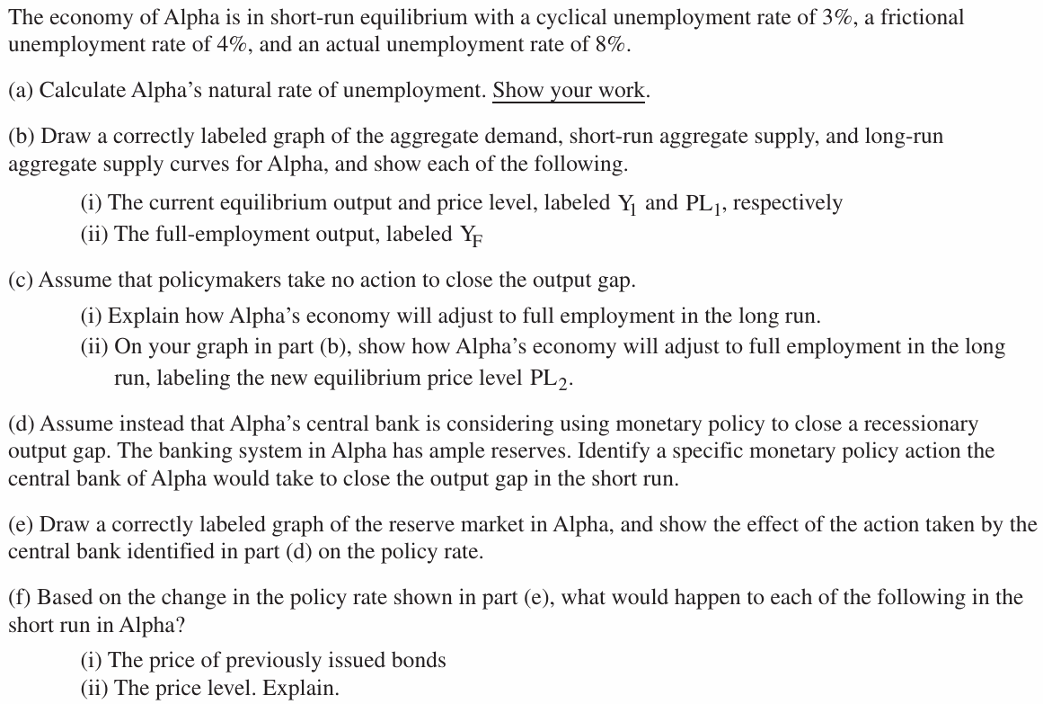
Answer
(a).actual unemployment rate = cyclical unemployment rate + natural unemploymentnatural unemployment = frictional unemployment + structural unemploymentstructural unemployment = 8% - 4% - 3% = 1%natural rate of unemployment = 4% + 1% = 5%
(b).
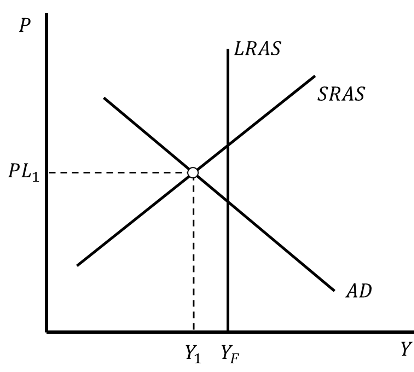
(c).(i). Wages and prices will decrease, shifting the SRAS to the right. When the equilibrium reaches LRAS, the economy is adjusted to full employment.(ii).
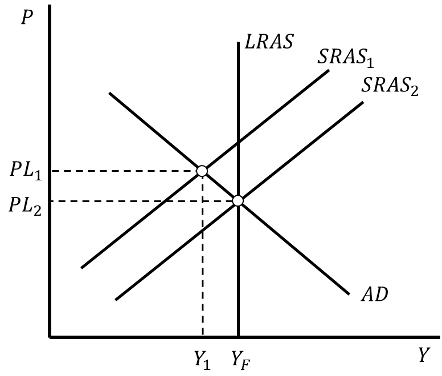
(d).Decrease interest on reserve. (or decrease administered interest rate)(e).

Or for decrease administered interest rate

(f).(i). Price of bonds increase.(ii). Price level Increase.Low interest rate increase investment and consumption, AD shifts rightward. The new equilibrium has a higher price level and a higher output.
Set 1, question 2
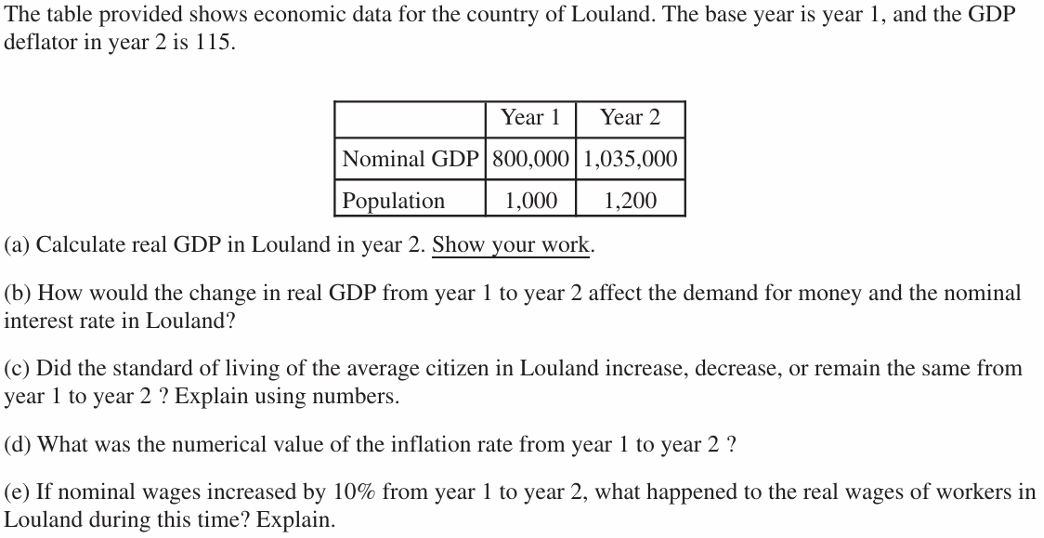
Answer
(a).real GDP = ( nominal GDP / GDP deflator ) × 100 = ( 1035000 / 115 ) × 100 = 900000
(b).Real GDP interest increase, demand of money increase and nominal interest rate increase.
(c).Decrease, because real GDP per capita that reflect living standard decreased.real GDP per capita (year 1) = 800000 / 1000 = 800real GDP per capita (year 2) = 900000 / 1200 = 750
(d).Nominal inflation rate is 15%Inflation rate = 115 / 100 -1 = 15%
(e).Real wages decrease, because the price level increase (by 15%) faster than nominal wages (by 10%).
Set 1, question 3
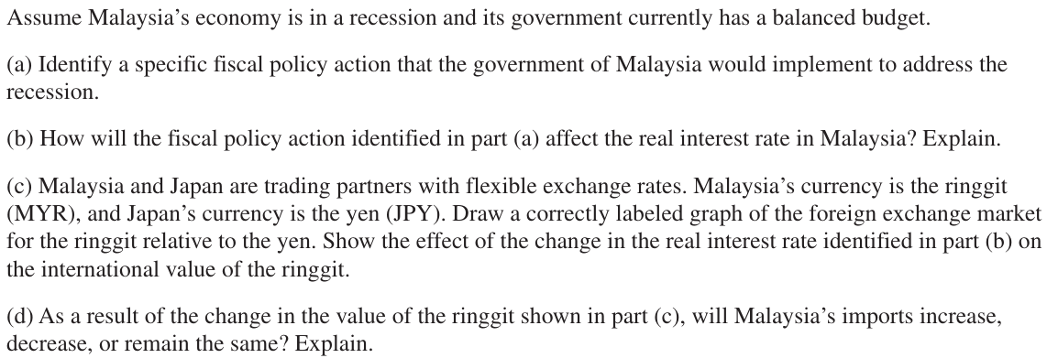
Answer(a).Increase government spending (or tax cut).(b).Real interest rate increase.When government increase its spending, it must borrow money. This increases the demand of loanable funds, and eventually increase the real interest rate.(c).MYR (ringgit) appreciates.
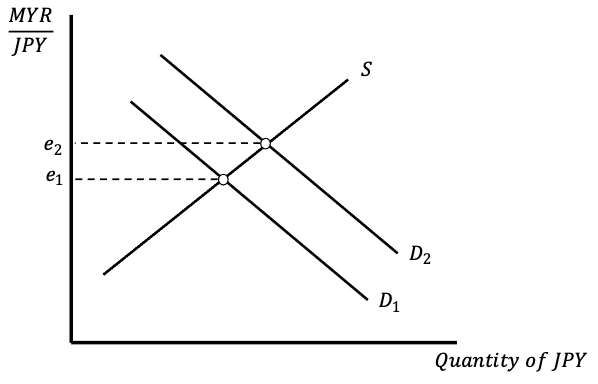
(d).Imports increase.MYR appreciates, makes impots goods relatively cheaper compare to domestic goods, this leads to more imports.
Set 2
Set 2, question 1
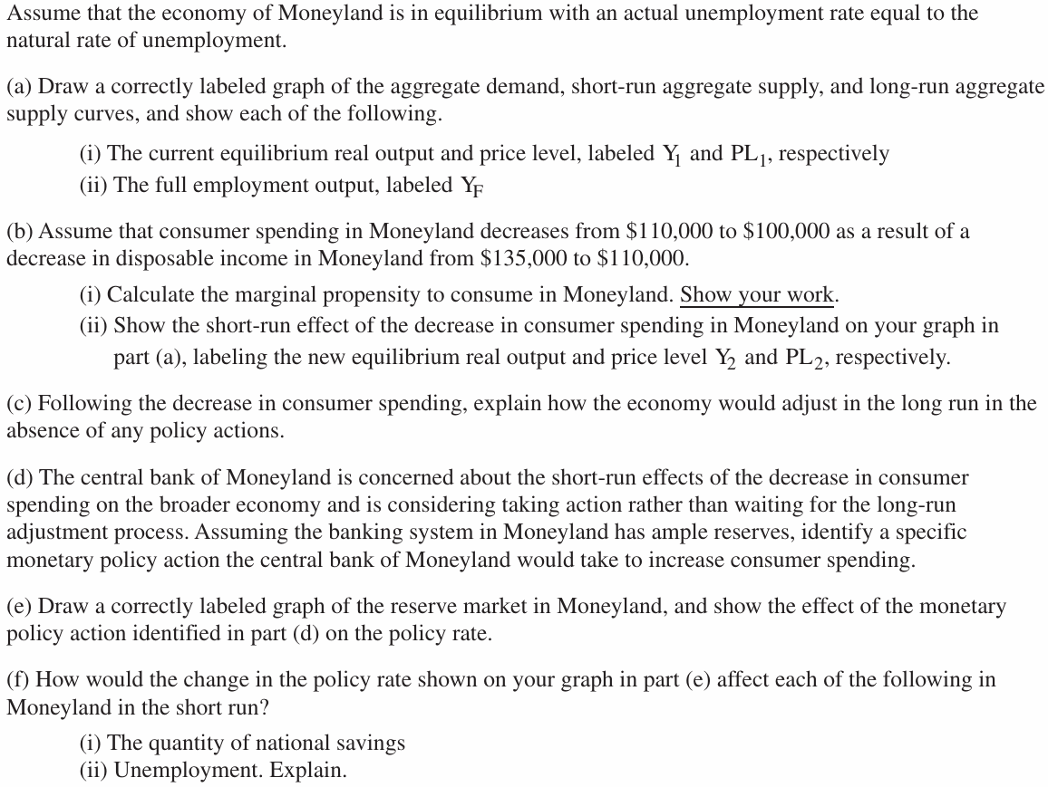
Answer(a).
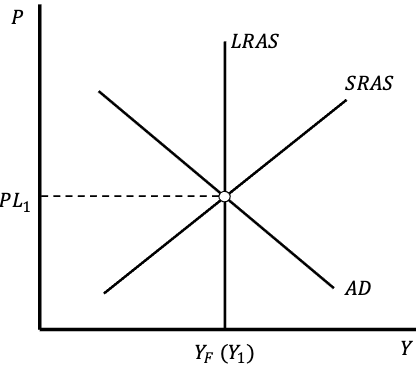
(b).(i).ΔC = 110000 - 100000 = 10000 ΔY = 135000 – 110000 = 25000 MPC = ΔC / ΔY = 0.4(ii).
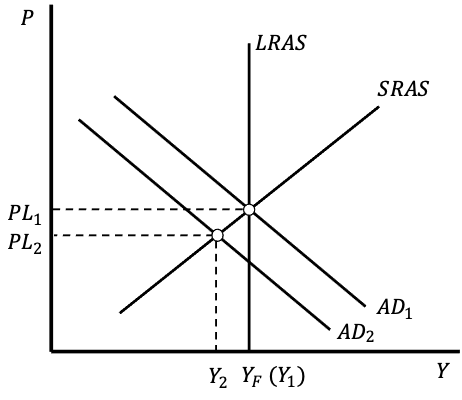
(c).Wages and prices will decrease, shifting the SRAS to the right. When the equilibrium reaches LRAS, the economy is adjusted to full employment.
(d).Decrease interest on reserve. (or decrease administered interest rate)
(e).

Or for decrease administered interest rate

(f).
(i). Quantity of national saving increases.
(ii). Unemployment rate decreases.
Interest rate decrease leads to increase in consumption and investment, AD shift rightward and output increase. More output needs more workers, so the unemployment rate decreases.
Set 2, question 2
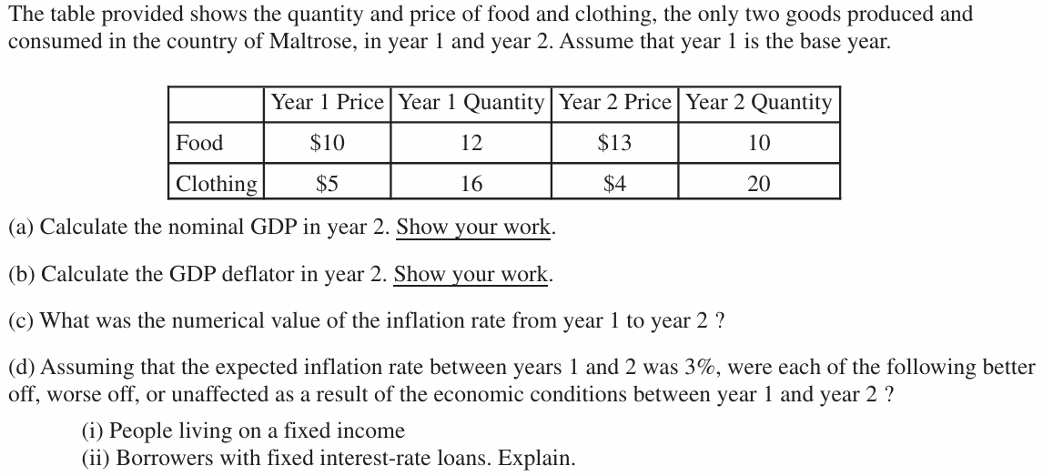
Answer
(a).nominal GDP = 13 × 10 + 4 × 20 = 210
(b).nominal GDP = 210
real GDP = 10 × 10 + 5 × 20 = 200
GDP deflator = ( nominal GDP / real GDP ) × 100 = ( 210 / 200 ) × 100 = 105
(c).5%(Price index from 100 to 105)
(d).
(i) Fixed income earner worse off (unexpected inflation).
(ii) Borrowers better off.
Equation r = I – inflation rate. The nominal interest rate of a loan is fixed, and the inflation is higher than expected, so that the real interest rate is lower than expected.
Set 2, question 3
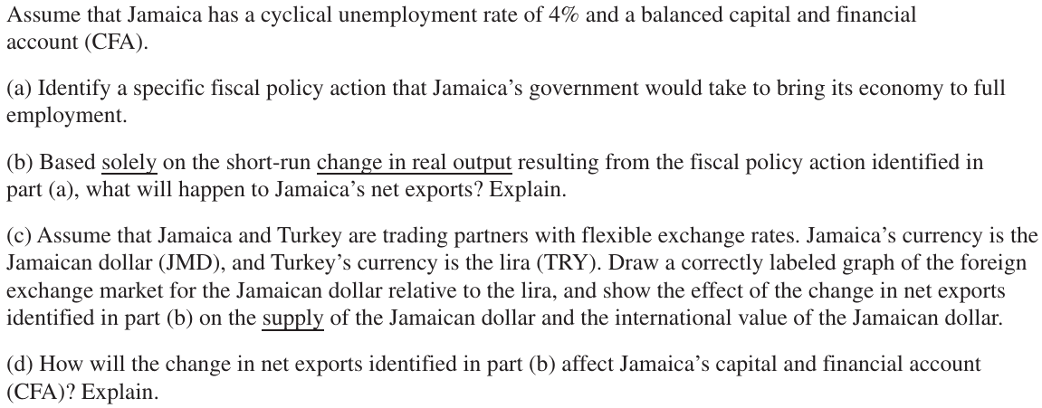
Answer
(a).Increase government spending (or tax cut).
(b).Net export decrease.
If the government increases its spending, the real output increases, disposable income increases and consumption increases. When consumption increases, people buy more import goods as well, thus decreases net export.
(c).JMD depreciates.
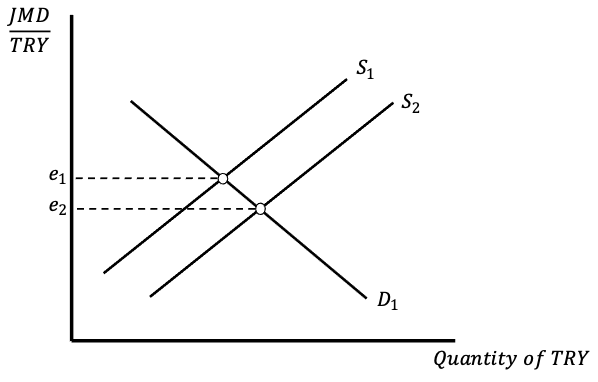
(d). CFA surplus.
A decrease in net exports means there is a current account (CA) deficit. And CA + CFA = 0, so if CA is in deficit, CFA must be in surplus.





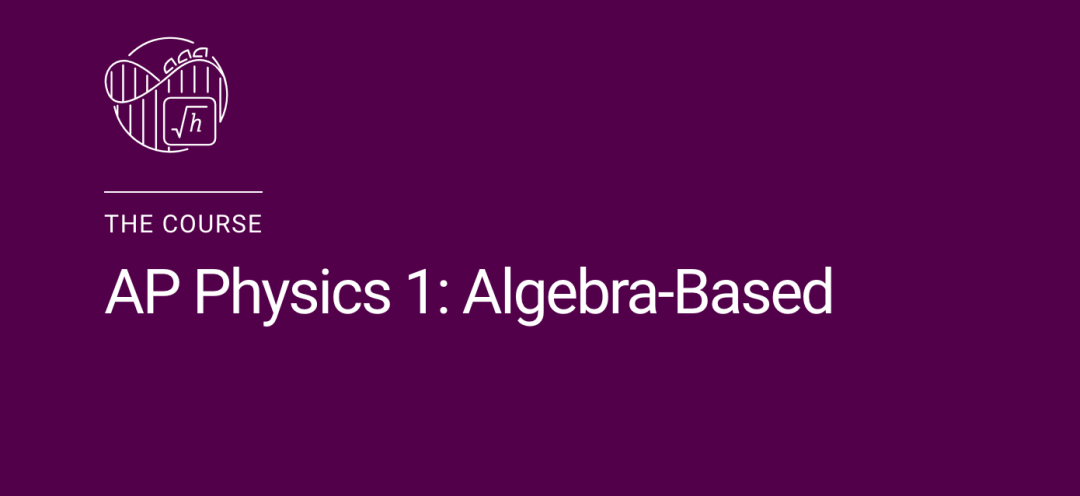









評論已經被關(guan) 閉。